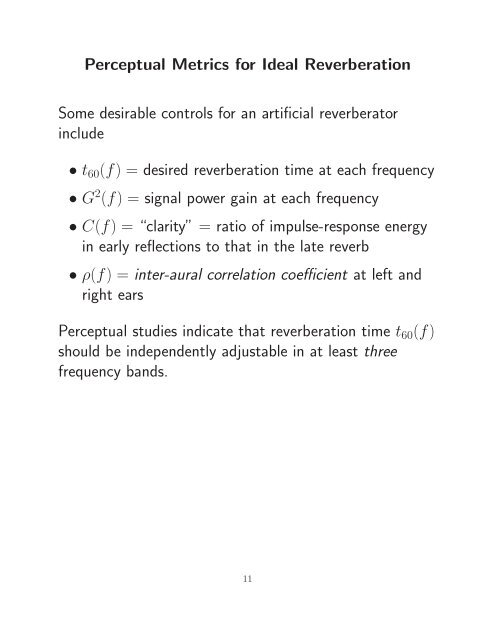Articles - CCRMA - Stanford University
Articles - CCRMA - Stanford University
Articles - CCRMA - Stanford University
You also want an ePaper? Increase the reach of your titles
YUMPU automatically turns print PDFs into web optimized ePapers that Google loves.
Perceptual Metrics for Ideal Reverberation<br />
Some desirable controls for an artificial reverberator<br />
include<br />
• t60(f) = desired reverberation time at each frequency<br />
• G 2 (f) = signal power gain at each frequency<br />
• C(f) = “clarity” = ratio of impulse-response energy<br />
in early reflections to that in the late reverb<br />
• ρ(f) = inter-aural correlation coefficient at left and<br />
right ears<br />
Perceptual studies indicate that reverberation time t60(f)<br />
should be independently adjustable in at least three<br />
frequency bands.<br />
11
















